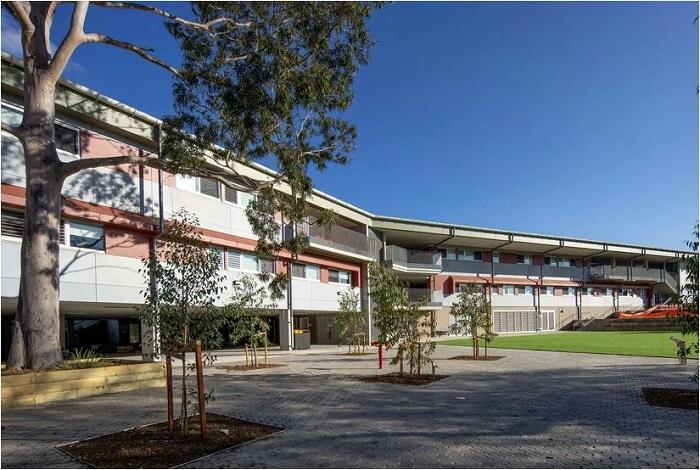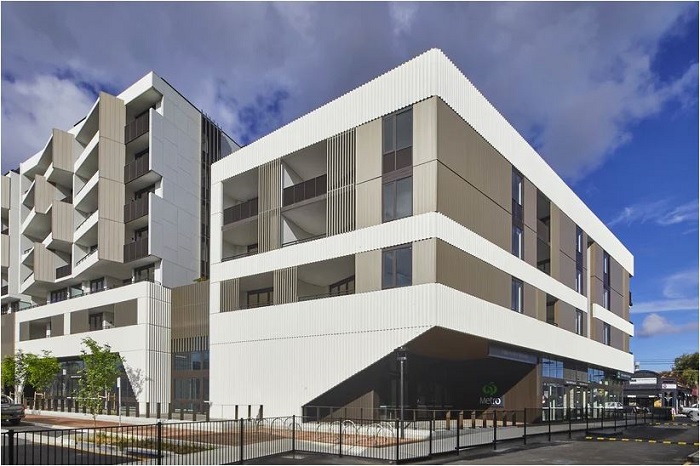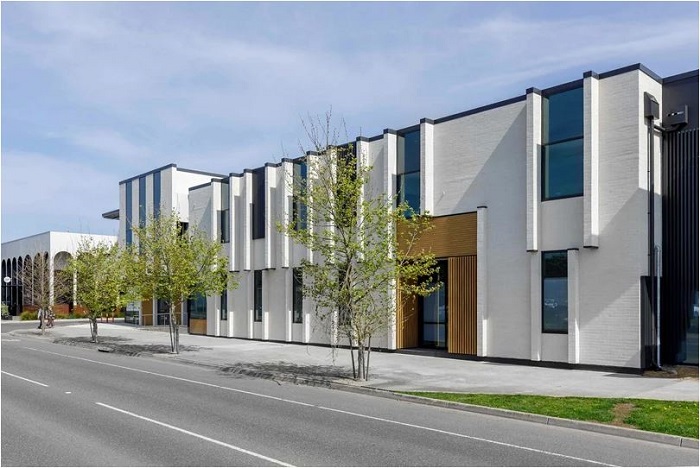Biophilic facade design is on every architect and designer’s mind, as a focus on sustainable design takes centre stage in the architectural world. Creating harmony between nature and the built environment is more than just a stylistic choice – it promotes a more sustainable world for its occupants, along with health, happiness, and wellbeing. When it comes to creating enduring biophilic designs, facade cladding plays an important role. As the first impression of a building, it has the power to exude the synergy between the built and natural worlds, and therefore, great care should be taken to make the right cladding selection.
Leading cladding supplier Fairview Architectural offers a variety of natural cladding materials, styles, and textures, allowing architects to bring creativity and innovation to sustainable design.
Planning a biophilic design
Architects and building designers seek to make their mark on new buildings – particularly by showcasing their ability to create a sustainable, environment-friendly landmark. By following best practices for biophilic building design, every choice they make plays a role in achieving this. A cladded facade provides ample opportunity to create an energy-efficient biophilic design, with rainscreen systems offering reduced energy consumption, natural materials emphasising a connection with nature, and recycled or recyclable materials contributing to the circular economy.
Achieving natural design with the right exterior cladding
Architectural facade cladding helps occupants form their first impression of a building – and it is here that a connection with nature can begin. Cladding styles, colours, textures and shapes can all be used to evoke a sense of being in the natural world. Designers can choose natural materials, flowing natural shapes or a combination to bring biophilic facade designs to life.
Naturally coloured and textured facade panels
A natural appearance can be achieved in many ways, but none more so than by using authentic natural materials. Rough, hewn natural textures and earthy colours all contribute to an instant connection with the natural environment, and can be customised to suit different aesthetics and artistic visions. Fairview’s cladding range offers a variety of natural materials to simulate a genuine natural environment – from the earthy terracotta tiles of Argeton to the contemporary pre-finished fibre cement panels of Genesis. With an array of different natural materials on offer, classic textures can easily be achieved to add a three-dimensional sense of nature to a building that can be seen and felt.

Picton High School, NSW, features Genesis Raw and Genesis Depth in Light Slate, Paprika and Jade
Curved cladding panels and the biophilic flow
One key principle of biophilic design is creating a connection with space and place. Inherent flows across spaces can contribute to this connection with place, evoking a sense of natural elements such as running water and undulating sand hills. Facade cladding can be used to create this flow, either by being arranged cohesively across curved walls, or by rolling bending or curving panels to create a similar effect. Natural tiles and bricks can easily be arranged to create the appearance of curves, while aluminium, as a durable yet flexible cladding option, allows the panels themselves to be bent and curved, for wave or ripple effects. Fairview’s Stryüm and Vitradual are two examples of aluminium panels that can be used to create a curvy, biophilic effect, while offering durability and flexibility in design.

Park Sydney, Erskineville NSW, features curved Stryüm Shadow 160 & 300 profiles
Classic facade design — the essence of natural Australia
Whether designers are seeking to create a traditional or contemporary aesthetic, there is a wealth of cladding choices that will allow them to achieve natural, sustainable designs. Classic facade design architecture offers a timeless aesthetic, and often features beloved, earthy tones popular in Australia and across the world. Terracotta tiles such as Argeton allow for creative flexibility in facade design, with a range of coloured glazes – but the much-loved and classic brick can also come into its own as a biophilic facade choice. Modern brick facade design allows that classic aesthetic to be retained, but with clever design features in place for a more seamless installation, a more energy-efficient facade, and an easier way to achieve a biophilic design. Fairview’s Smartbric provides an option to recreate popular Australian and international brick designs, but features light, easy-install brick slips on a track and rail system, which also doubles as a rainscreen. With the option for mortared or mortarless installation, designers can choose a traditional or contemporary approach, bringing the natural texture of brick to a whole new world of architectural facade design.

Clyde Health Hub, VIC, features the Smartbric rainscreen cladding system in Salt
Contemporary architectural cladding for modern sustainable design
On the other side of the design coin, contemporary designs, while sleek and chic, can still carry the principles of biophilic and sustainable design. Solid, interlocking aluminium that comes in concave and convex profiles, such as Fairview’s Stryüm, can be arranged to create the illusion of curves, and can even replicate the aesthetic of natural materials, with timber-look and rust-look finishes available to recreate popular elements of nature.
Reducing the impact of building facade design
As well as creating new biophilic facades, existing cladded facades can be transformed into new, natural-look designs. Cladding recycling programs, such as Fairview’s Ecoloop, can assist this process. When harmful combustible cladding is removed, Ecoloop allows every component to be recycled, contributing to a more sustainable world, while paving the way for replacement facades from natural materials or durable aluminium options that can also create a visual connection with nature.
The benefits of choosing sustainable cladding
Biophilic design and sustainability go hand in hand. As well as evoking the appearance of nature, biophilic design typically assists in preserving nature. Choosing hardwearing materials that also deliver direct natural experiences to occupants contributes to a culture of sustainable biophilic design. Natural materials, while visually promoting a connection to nature, also help reduce energy consumption, as they can deteriorate naturally over time to reduce time in landfill. Similarly, materials such as aluminium provide durability and weatherproofing for a more sustainable, energy-efficient building, while being recyclable at end of life. Arranging either type of cladding into a rainscreen system can also provide improved thermal efficiency.
As well as the environmental benefits, sustainable biophilic design can provide enhanced health and wellbeing for a building's occupants. By providing a connection to nature, as well as a sense of belonging in space and place, biophilic cladding design can improve mental health and productivity.
Discover biophilic cladding designs with Fairview
As the leader in supplying innovative, sustainable cladding, Fairview offers a variety of cladding options ideal for biophilic facade design. Fairview’s Naturals Range, featuring compressed fibre cement, terracotta tiles and natural brick slips, brings familiar textures and colours to the built environment. For contemporary designs, durable, recyclable aluminium and honeycomb panels can be finished in natural woodgrains and more, with the bonus of heat dissipation for thermal efficiency.
Whatever creative direction your biophilic facade design takes, Fairview has a cladding material suited to the project.
Please visit our website to explore the endless possibilities of what Fairview’s cladding could bring to your next design.

